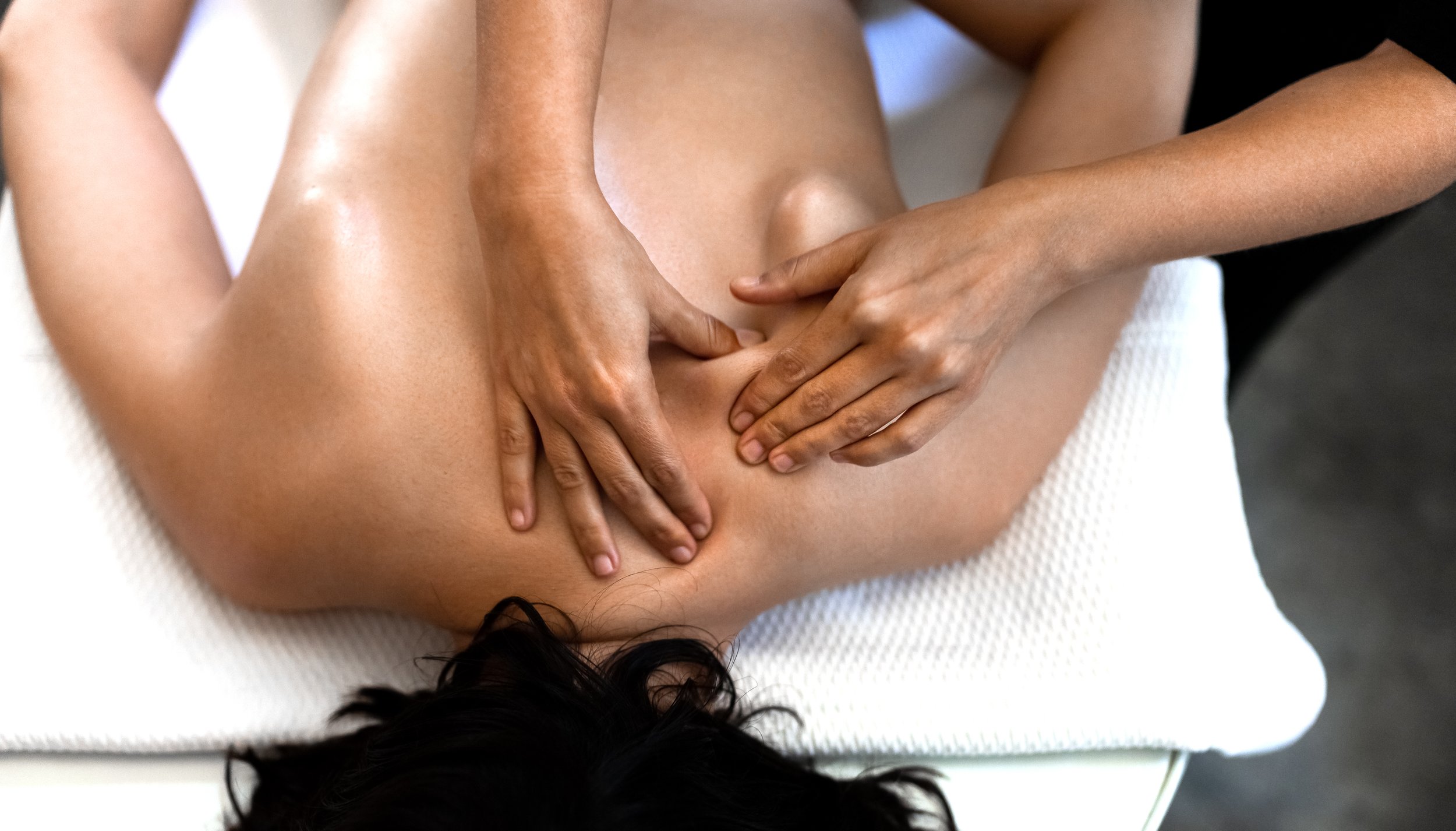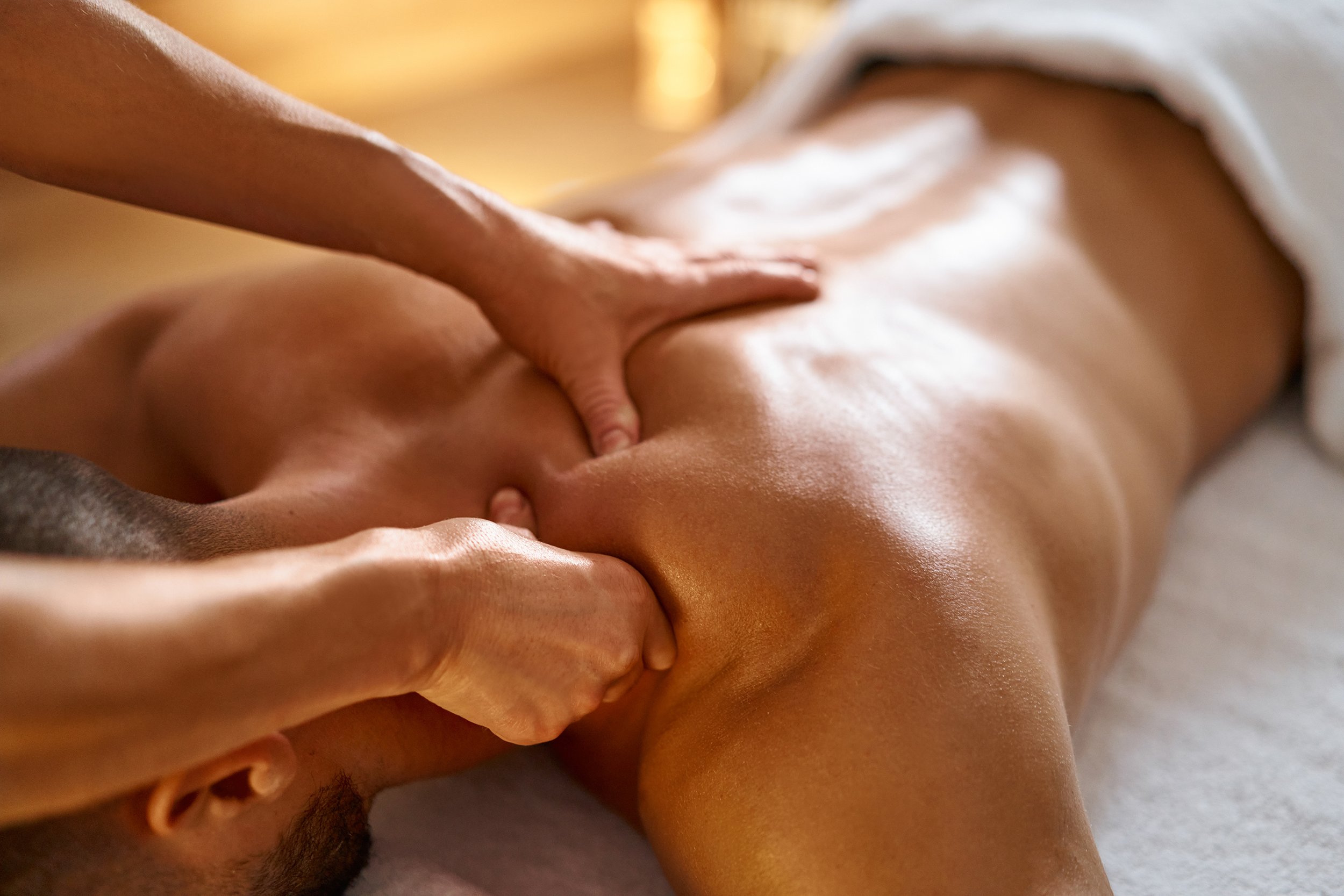
Massage Therapy
Massage therapy is a hands-on approach to manipulating the soft tissues of the body to enhance a person's well-being. It has been practiced for thousands of years and is known for its therapeutic benefits. Massage therapists use various techniques, including rubbing, kneading, and applying pressure to the muscles, tendons, ligaments, and other soft tissues of the body.
Our licensed Massage Therapists will consider your specific needs and goals and tailor the massage techniques accordingly. It's also essential to communicate openly with your massage therapist about any health conditions, concerns, or preferences you may have to ensure a safe and effective session.
-
Massage can help promote relaxation, reduce stress levels, and provide a calming effect on the nervous system.
-
Massage therapy can help alleviate muscle tension, reduce pain, and improve range of motion. It is often used to address conditions such as back pain, neck pain, headaches, and sports injuries.
-
The pressure applied during a massage helps stimulate blood flow, which can improve circulation and oxygenation to the tissues, aiding in the healing process.
-
Massage therapy can be beneficial in the rehabilitation of injuries by reducing scar tissue formation, promoting tissue regeneration, and improving flexibility and mobility.
-
Regular massage sessions can contribute to an overall sense of well-being, promoting relaxation, improving sleep quality, and boosting mood.
The benefits of
massage therapy
can include:
Massage Services
Deep Tissue Massage
$100 (55 minutes)
$140 (85 minutes)
Deep tissue massage is a type of massage therapy that focuses on realigning deeper layers of muscles and connective tissue in the body. It is designed to target chronic patterns of tension and muscle tightness by applying sustained pressure and slow strokes to the affected areas.
During a deep tissue massage, a massage therapist will use their hands, fingers, elbows, and sometimes even forearms or specialized tools to apply pressure and manipulate the muscles and soft tissues. They may also incorporate other techniques such as stretching, myofascial release, and trigger point therapy to address specific areas of tension or discomfort.
The goal of deep tissue massage is to break up adhesions (bands of rigid tissue) that can cause pain, limited mobility, and inflammation. By releasing these adhesions and promoting better blood circulation, deep tissue massage can help relieve chronic muscle tension, reduce pain, improve flexibility, and enhance overall physical function.
*It's important to note that deep tissue massage can sometimes cause temporary discomfort or soreness during or after the session. This is because the massage therapist is working on deeper layers of tissue, and it may take a few sessions for the body to fully adjust and for the muscles to relax. It's always recommended to communicate with your massage therapist about your comfort level and any areas of concern during the session.
Medical Massage Therapy
$140 (55 minutes)
Medical massage refers to a specialized form of massage therapy that focuses on treating specific medical conditions or addressing specific health concerns. The goal of medical massage is to alleviate pain, promote healing, and improve overall health outcomes. It may be used as a complementary therapy alongside conventional medical treatments or as a standalone treatment in certain cases. Medical massage techniques are tailored to the individual's specific needs and condition, and the therapist may use a variety of massage modalities and techniques to address the problem areas.
Medical massage can be beneficial for a wide range of conditions, such as chronic pain, sports injuries, musculoskeletal disorders, post-surgical rehabilitation, neurological conditions, and stress-related disorders. It can help reduce pain and inflammation, improve circulation, enhance flexibility and range of motion, relax muscles, and promote overall relaxation and well-being.
*Before undergoing medical massage, it is important to consult with a healthcare professional, such as a physician or physical therapist, to ensure that it is appropriate for your specific condition and to determine the most suitable treatment plan.
Swedish Massage
$80 (55 minutes)
$110 (85 minutes)
Swedish massage is a popular type of massage therapy that originated in Sweden and is commonly practiced around the world. It involves the use of various techniques to relax the body, improve circulation, and promote overall well-being. Here are some key features of Swedish massage:
-
Swedish massage typically uses a combination of long, flowing strokes, kneading, friction, tapping, and vibrations to manipulate the soft tissues of the body. The therapist may use their hands, forearms, or elbows to apply these techniques.
-
The primary goal of Swedish massage is to promote relaxation and relieve muscle tension. It can also help to reduce stress, improve flexibility, and enhance the body's natural healing processes.
-
Swedish massage has several potential benefits, including reducing muscle stiffness and soreness, improving blood circulation, boosting the immune system, and promoting better sleep. It can also have a calming effect on the nervous system and provide a sense of overall relaxation.
-
During a Swedish massage session, the therapist typically works on the entire body, focusing on different areas based on the client's needs and preferences. The session may begin with the client lying face down and later transitioning to the back and other areas.
-
To facilitate smooth gliding and reduce friction, massage oil or lotion is often applied to the skin during a Swedish massage. This helps the therapist's hands to move more easily and provide a more comfortable experience.
-
Swedish massage can be tailored to the individual's preferences and needs. It is important to communicate with the massage therapist regarding the desired pressure, areas of focus, and any specific concerns or sensitivities.
*It's worth noting that Swedish massage is generally considered a gentle and relaxing form of massage therapy. However, if you have any specific health conditions or injuries, it's always a good idea to consult with a healthcare professional before receiving a massage to ensure it is safe and appropriate for your situation.



